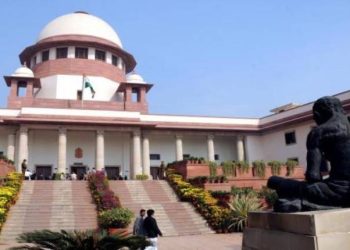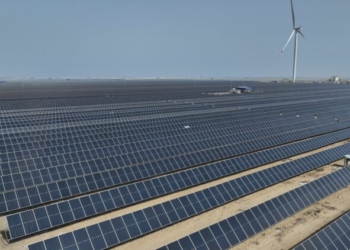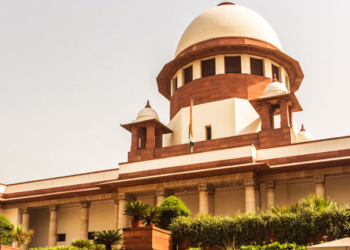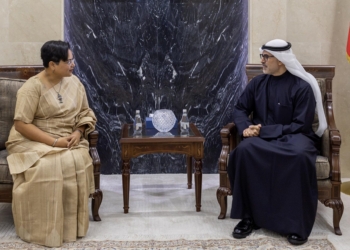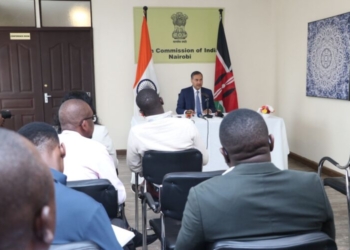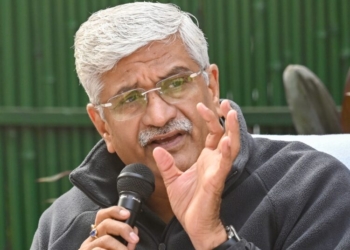New Delhi:External Affairs Minister S. Jaishankar on Sunday said that critical and emerging technologies (CETs) are going to emerge as important metrics of power.
Addressing the SemiconIndia conference virtually, Jaishankar said, “It is not surprising that CETs should now emerge as one of the important metrics of power. Who invents, who manufactures, what are the market shares, where are the resources, who has the skills, where is the talent pool — these are increasingly the crucial questions.”
He noted: “The depiction of a Chip War may be somewhat overstated, but it has more than a fundamental kernel of truth. To a considerable extent, concerns in the CET field are influenced by how market shares and production dominance was leveraged in other areas”.
The external affairs minister said that technology trade is not just trade, it is as much as about political science.
“The truth is that we are seeing the re-emergence of export controls as a response to assertions of economic strength,” Jaishankar observed.
There have been a wide range of global interactions as well on this very subject, he said.
“Notable among them is the MoU on Semiconductor Supply Chain and Innovation Partnership that was concluded between India and the United States during US commerce secretary Gina Raimondo’s visit in March 2023 to India. It sought to establish a collaborative mechanism that would represent a productive intersection of America’s CHIPS and Science Act and India’s Semiconductor Mission,” Jaishankar informed.
During Prime Minister Narendra Modi’s state visit to the US in June 2023, semiconductors was also a focus of the talks with US president Joe Biden and his team, he said further.
“As you would be aware, the two leaders chaired a technology round-table with the brand names of industry. The Joint Statement highlighted this aspect of our cooperation. Three US companies — Micron Technology, Lam Research and Applied Materials — made specific commitments that have been the subject of your deliberations as well,” Jaishankar told the gathering.
He said that it was essential that these developments are viewed from the larger perspective of India and the United States building a technology partnership for the future.
“India’s entry as the latest member of the Minerals Security Partnership is worth noting, given the importance today of diversifying and securing supply chains in that area. Similarly, cooperation between the two countries has been a visible tailwind in the sphere of advanced telecommunications,” Jaishankar said.
Even as India’s 5G rollout starts to gather momentum, it is noteworthy to seek Bharat 6G and the American NextG Alliance co-lead research. Launching Open RAN deployments and participating in the US Rip and Replace Programme is also worth noting. This collaboration today extends to new initiatives and additional domains and can be expected to grow steadily, the minister noted.
“We see that, for example, in space where India is signing the Artemis Accords and promoting stronger ISRO-NASA collaboration. It is visible too in the creation of a Joint Indo-US Quantum Coordination Mechanism. The Innovation Handshake between Indian entities and the National Science Foundation (NSF) holds much promise. So too does the INDUS-X innovation bridge in defence technologies,” he said in his address.
Jaishankar reminded the audience that earlier in May 2023, the leaders of the Quad grouping agreed at their meeting in Hiroshima on Principles on Critical and Emerging Technology Standards.
“This inter-alia supported industry-led, consensus based multi-stakeholder approaches. It endorsed technology standards that promote interoperability, competition, inclusiveness and innovation. The intent was to foster technology standards that support safety, security and resilience,” he said.
These voluntary principles were meant to assist governments and organizations to develop appropriate standards and it is clearly Quad’s expectation that many other nations would join them in that regard, the minister added further.
“Japan is another significant partner in this particular domain and my meeting just this week with Foreign Minister Hayashi affirmed the priority that we both attach to it. Just this month, we concluded a Memorandum of Cooperation on Semiconductor Supply Chain Partnership. It is expected to promote semiconductor design, manufacturing, equipment research, talent development and industrial resilience,” Jaishankar informed.
“I should also mention our Quad partner Australia, because of their salience in raw materials, critical minerals and innovative research. Do note that we have an ongoing Critical Minerals Investment Partnership with that country,” he said.
India’s Semiconductor Mission is not just about meeting domestic requirements. It is also about contributing to a global demand for trusted manufacturing. Indeed, it is truly a powerful case for Make in India and Make for the World, Jaishankar explained.
He also emphasised that “trust and transparency are also today key issues as we debate the future of the digital domain. Who processes and harvests our data is increasingly crucial in a world of artificial intelligence”.
“As political democracies, pluralistic societies and market economies, we all have understandable concerns of both privacy and security. It is, therefore, essential that those of us who are comfortable working with each other enhance our collaboration,” the minister said.
(IANS)




